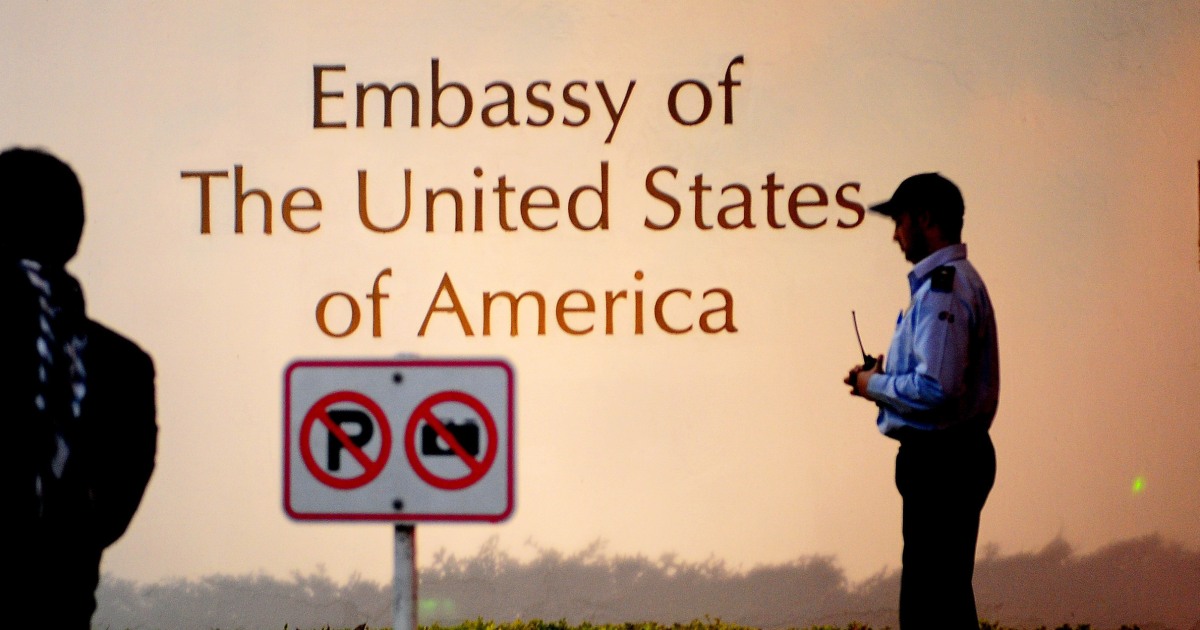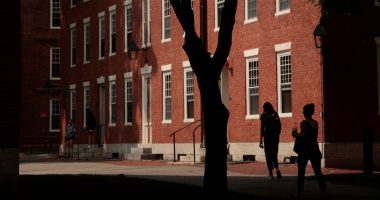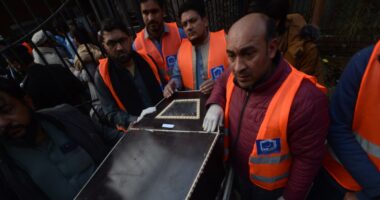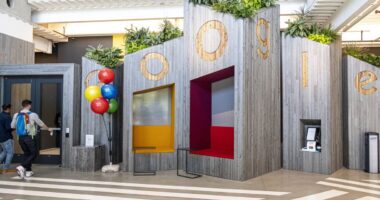
In a Facebook group filled with almost 25,000 South Asians looking to travel to the U.S., daily anonymous posts fly in by the hundreds.
“I am looking for B1/ B2 visa appointment in the next year,” one person wrote.
Dozens of commenters underneath the appeal affirm its message: “Me too,” “Looking for my parents,” “The earliest one I’m seeing is for 2025.”
The mass scramble is the result of record-long wait times for Indian nationals trying to get a tourist visa to the U.S., according to experts.
Waiting periods at American consulates in India range from a few months to several years just to secure an interview. A simple visit for the holiday season would sometimes require almost three years of advanced planning for someone who doesn’t already hold a visa.
Immigration economists say beyond the personal damage this is causing to families, the inaccessibility has the potential to stymie Indian immigration to the United States overall.
“This is clearly a broken system,” said Gaurav Khanna, an assistant professor of economics at the University of California at San Diego, whose research focuses on immigration. “Grandparents haven’t seen grandkids in four years because of Covid, and now they can’t get visas. That affects how welcome the Indian diaspora themselves feel in the U.S. ‘If my family can’t come visit us, I don’t think my life in the U.S. is as rewarding as I was promised.’”
In some Indian cities, like Chennai and Hyderabad, the wait time for a tourist visa interview is 999 days, according to numbers released by the U.S. State Department, which far exceeds the global median wait time of two months. In Kolkata, the wait is 959 days. Other consulates are only taking appointments for emergency tourist visas, which experts suspect have a shorter backlog of their own.
“Just from a pure management, organizational point of view, it seems like a completely dysfunctional system,” Khanna said.
NBC News reached out to the State Department and has not received a response. In a statement released last month, they acknowledged prolonged wait times across the globe.
“The Department of State is successfully lowering visa interview wait times worldwide,” the statement said. “We have doubled our hiring of U.S. Foreign Service personnel to do this important work, visa processing is rebounding faster than projected, and in Fiscal Year (FY) 2023 we expect to reach pre‑pandemic visa processing levels.”
According to Julia Gelatt, a senior analyst with the Migration Policy Institute, the disarray stems from travel moratoriums and hiring freezes during the height of the pandemic that left thousands of visas backlogged. The State Department cites staffing issues which it is trying to remedy, but Gelatt says it won’t be a quick process.
“The State Department says that they’re doubling their hiring and they’re training up staff,” Gelatt said. “But it takes a while to staff consulates because they’re teaching Americans new languages and giving them lots of training before they’re put in their posts.”
But the Covid explanation isn’t satisfactory for Khanna.
“Most countries have had Covid-related backlogs and staffing issues,” he said. “At some point staffing issues are a sign of dysfunction…It’s fairly easy to get a visa to come to India from the U.S. People just have to wait a few weeks. But the other way around it takes a very long time. It shows that efficient systems can exist to grant visas.”
As the consulates’ backlogs continue to grow and available appointments stretch years into the future, some are taking matters into their own hands. On Facebook and WhatsApp, some South Asian organizations are offering people a back channel to earlier interview times, Khanna has observed.
Dozens of social media groups dedicated to solving visa issues have cropped up this year alone, with admins flaunting successful early interview appointment bookings and encouraging members to direct-message them for help. Often marketed as “visa consulting,” or “interview early date help,” they reserve upcoming appointments in large numbers, then cancel and sell the slots to desperate travelers willing to spend the money, Khanna said.
“That’s, again, a sign that there’s something wrong with the system here,” he said. “People who get in touch with these groups can pay a lot of money to get a quicker appointment. That’s really exacerbating the problem. But people are willing to pay.”
Khanna says they’re capitalizing off a lack of clarity behind the processes and complications that often arise when trying to get even a short-term U.S. visa.
It adds another financial barrier to entry for lower-income South Asians trying to visit the United States, Khanna said.
“It’s not equitable,” he said. “The consulates are saying it’s a staffing issue. Essentially, that’s another way of saying, ‘we haven’t gotten our act together.’ It’s not an excuse in any way.”
Khanna said families will continue to go years without seeing each other and America’s image as a haven for Indian immigrants has the potential to deteriorate.
“As it is, they’re leaving their family on the other side of the world and now it’s difficult for their family to come visit,” he said. “That has impacts that are not just related to tourism. It has impacts on where the diaspora are willing to settle down. Do we want to be in a place like the U.S. where our family finds it so difficult to visit?”
Source: | This article originally belongs to Nbcnews.com










